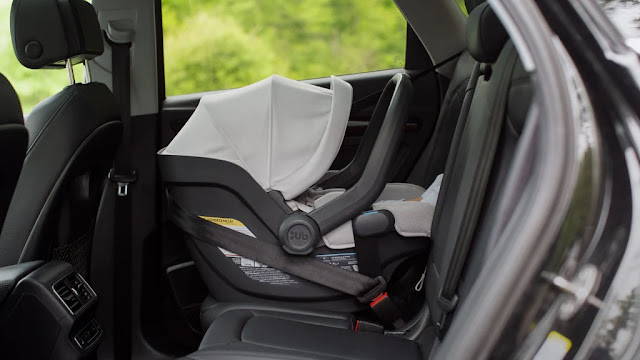Installing Your Infant Car Seat: Step-by-Step Guide
In this comprehensive guide, we'll walk you through the essential steps of installing your infant car seat correctly. Ensuring that your car seat is securely installed is crucial for your baby's safety during every car journey. We'll provide you with a step-by-step process to help you navigate this important task.
Introduction
Congratulations on becoming a parent! As you embark on this incredible journey, one of the most critical tasks you'll face is correctly installing your infant car seat. Ensuring your baby's safety during car rides is non-negotiable, and this step-by-step guide will provide you with the knowledge and confidence to install your car seat with ease.
Why Proper Car Seat Installation Matters
Protecting Your Baby
Proper car seat installation is vital because it significantly reduces the risk of injury in the event of a car accident. Your infant relies on you to provide a secure and safe environment during car journeys.
Legal Requirements
In many places, proper car seat installation is a legal requirement. Failure to comply with these regulations can result in fines and penalties.
Types of Infant Car Seats
Rear-Facing Only Seats
These seats are designed for infants and are rear-facing only. They provide a safe and snug fit for your baby.
Convertible Seats
Convertible seats can be used both rear-facing and forward-facing as your child grows. They offer versatility but may have different installation requirements.
Before You Begin: Gather Your Tools
Before you start the installation process, gather the necessary tools and items:
- Your infant car seat and base
- Your vehicle's owner's manual
- The car seat's instruction manual
- A locking clip (if your car seat requires it)
- A towel or pool noodle (for leveling if needed)
- Your baby's favorite toy to keep them entertained during the process
Step 1: Read the Manual
The most crucial step is to read both your vehicle's owner's manual and the car seat's instruction manual thoroughly. These documents provide essential information on installation specifics and safety guidelines.
Step 2: Choose the Right Location
Decide where in your vehicle you'll place the car seat. The middle back seat is often the safest, but any rear seat is generally acceptable. Avoid installing a car seat in a seat with an active airbag.
Step 3: Prepare Your Car Seat
Ensure that your car seat is set up correctly according to the manufacturer's instructions. Remove any padding or covers before installation.
Step 4: Position the Base
Place the base on the vehicle seat, positioning it according to the car seat and vehicle manuals. Use a towel or pool noodle to ensure the base is level if needed.
Step 5: Attach Using LATCH or Seat Belt
You can choose to install the car seat using either the LATCH (Lower Anchors and Tethers for Children) system or the vehicle's seat belt.
- LATCH Installation: Attach the lower anchors to the designated points in your vehicle and tighten the straps.
- Seat Belt Installation: Thread the seat belt through the base and lock it according to your vehicle's instructions.
Step 6: Check for a Secure Fit
After installation, ensure that the car seat base does not move more than one inch in any direction when tested at the belt path.
Step 7: Adjust the Harness Straps
Position the harness straps at or just below your baby's shoulders and ensure a snug fit using the chest clip. Perform the "pinch test" to ensure the straps are tight enough.
Step 8: Additional Tips for Safety
- Avoid placing your baby in the car seat with thick winter coats or bulky clothing.
- Remove harness covers and any additional items not included with the car seat.
- Regularly inspect your car seat for wear, damage, and recalls.
Conclusion
Properly installing your infant car seat is one of the most important steps you can take to protect your baby while traveling by car. By following this step-by-step guide and prioritizing safety, you can give your child the safest start on the road.
FAQs (Frequently Asked Questions)
1. When should I transition from an infant car seat to a convertible seat?
Typically, the transition occurs when your baby outgrows the height or weight limits specified by the infant car seat manufacturer, which is usually around 9-12 months.
2. Can I use a car seat that has been in a minor accident?
It's recommended to replace a car seat if it has been in any accident, even a minor one, as the structural integrity may be compromised.
3. What is the expiration date on infant car seats?
Infant car seats typically have an expiration date of 6-10 years from the manufacturing date. Check the label for the specific date.
4. Are all car seats compatible with all vehicles?
Not all car seats fit all vehicles perfectly. It's essential to check the compatibility between your car seat and vehicle and ensure a secure fit.
5. Is professional car seat installation necessary?
While professional installation can provide added peace of mind, you can install your car seat correctly by following the manufacturer's instructions and guidelines provided in this guide. However, if you have any doubts, professional assistance is always available.


